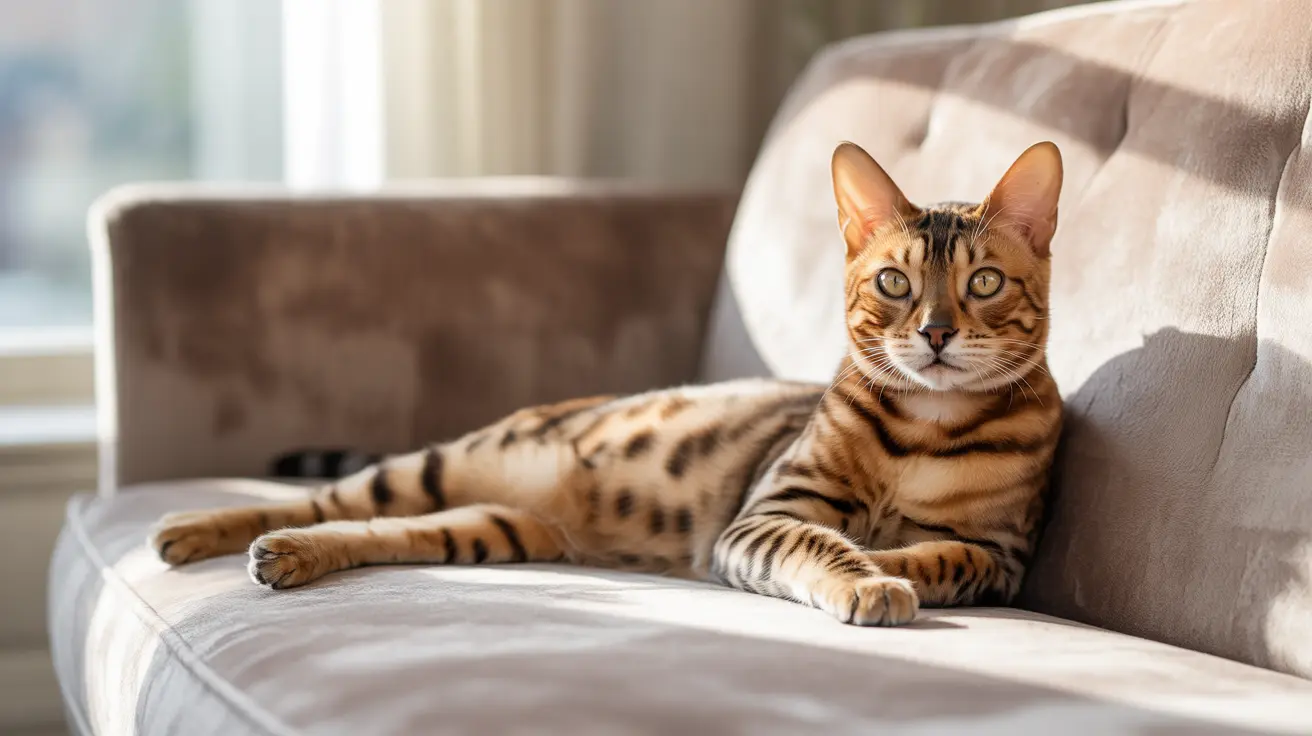When it comes to understanding our feline friends, their ears tell a fascinating story. Cat ear position meanings are essential signals that reveal your cat's emotional state, intentions, and response to their environment. By learning to interpret these subtle cues, you can better understand your pet and strengthen your bond.
In this comprehensive guide, we'll explore the various ear positions cats display and what they mean, helping you become fluent in this crucial aspect of feline body language.
The Basic Positions of Cat Ears
Neutral and Forward-Facing Ears
When your cat's ears are facing forward in a relaxed position, it's a sign of contentment and comfort. This neutral position indicates your cat feels safe and at ease in their environment. You'll often notice this position during peaceful moments, such as when your cat is enjoying gentle pets or lounging in their favorite spot.
Alert and Upright Position
Ears positioned straight up and forward signal that your cat is highly alert and interested in something. This position helps them gather maximum auditory information about their surroundings. You might notice this when they hear an unfamiliar sound or spot potential prey, like a bird outside the window.
Understanding Defensive and Anxious Ear Positions
Sideways-Facing "Airplane" Ears
When your cat's ears rotate to the sides, resembling airplane wings, it's often a sign of anxiety or irritation. This position serves as a warning signal and indicates your cat may need space. Watch for other body language cues that might accompany this position, such as a twitching tail or dilated pupils.
Flattened or Pinned Back Ears
This is one of the most serious ear positions to watch for. Ears pressed flat against the head indicate fear, extreme stress, or aggressive intentions. If you notice this position, it's best to give your cat space and avoid direct interaction until they calm down.
Reading Dynamic Ear Movements
Swiveling and Twitching
Cats' ears are remarkably mobile, capable of rotating up to 180 degrees independently. When you notice constant ear movement or twitching, your cat is likely tracking multiple sounds in their environment. However, excessive twitching accompanied by pawing at the ears might indicate health issues requiring veterinary attention.
One-Sided Ear Tilt
When one ear is tilted to the side while the other remains forward, your cat is likely focusing on a specific sound or stimulus. This asymmetrical position helps them pinpoint the exact location of interesting noises in their environment.
Using Ear Positions to Improve Cat Interactions
Understanding ear positions can help you:
- Anticipate your cat's needs and moods
- Prevent negative interactions
- Know when to approach or give space
- Identify potential health issues early
- Build trust through respectful responses to their signals
Frequently Asked Questions
What does it mean when my cat's ears are facing forward and relaxed?
Forward-facing, relaxed ears indicate your cat is content, comfortable, and feeling secure in their environment. This is their neutral, happy position.
How can I tell if my cat is scared or angry from their ear position?
Flattened or pinned-back ears against the head are clear signs of fear or aggression. When combined with other defensive body language, these positions indicate your cat is feeling threatened or upset.
Why does my cat tilt its ears to one side when listening?
Single-sided ear tilting helps cats precisely locate the source of interesting sounds. This behavior is part of their highly developed hunting and survival instincts.
What does it indicate if my cat's ears are constantly twitching or swiveling?
Regular ear movement usually indicates active listening and environmental awareness. However, excessive twitching combined with ear scratching might signal medical issues like ear mites or infections.
How can I use my cat's ear position to understand their mood better during interaction?
Monitor ear positions alongside other body language cues. Forward ears with slow blinks indicate comfort, while sideways or back-facing ears suggest discomfort. Adjust your interaction based on these signals.
Conclusion
Mastering the interpretation of cat ear positions is a valuable skill for any cat owner. By paying attention to these subtle yet important signals, you can better understand your feline companion's needs and emotions, leading to a stronger and more harmonious relationship.
Remember that ear positions are just one part of your cat's complete body language system. For the most accurate reading of your cat's mood, always consider ear positions in conjunction with other behavioral cues like tail position, body posture, and vocalizations.






